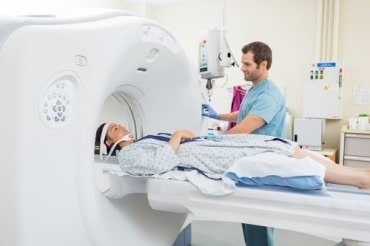
With continuous advancement of Bluetooth Low Energy (BLE) radios and advanced machine learning techniques, there is an opportunity to realize better in-building location accuracy.
When it comes to real-time analytics, the old real estate mantra location, location, location certainly applies. Many use cases benefit greatly from location data. And while GPS is the go-to technology for most applications, others that work within a building could offer enhanced capabilities if more precise location data were available. The challenge is striking the right tradeoff between precision and utility.
Wi-Fi RTLS System
With the ubiquity of Wi-Fi networks, many RTLS solution providers propose leveraging the existing Wi-Fi networks as the location-of-things (LoT) infrastructure. Albeit elegant in principle, there are many shortcomings for this approach, namely:
- Wi-Fi access point (WAP) deployment is usually optimized for data coverage and not real-time-location systems (RTLS). Most Wi-Fi vendors have separate deployment guidelines to support RTLS where additional WAPs are required to augment the spatial diversity to support RTLS. These additional WAPs are particularly needed for systems relying on triangulation-based techniques to establish location which ultimately drive the cost of the Wi-Fi-based RTLS solution upward.
- To mitigate the cost of these additional WAPs, these systems place low-frequency (LF) exciters at egress points providing ward-level accuracy. Due to the highly localized presence of this approach, many RTLS use cases will not be supported.
- In scenarios requiring room-level accuracy, yet other systems are installed such as infrared or ultrasonic. While these RTLS solutions do not propagate through walls and therefore give assured room level accuracy without false positives, they require extensive infrastructure which adds up to the overall cost.
Having the tag support all these technologies (Wi-Fi, LF, and infrared/ ultrasonic) increases the complexity, cost (design, install and maintain) and minimizes the adoption of RTLS solution. This approach also complicates the tag design and shortens its battery life expectancy.
See also: What’s Ahead for the RTLS Market in the Coming Months?
Accuracy vs. Utility Tradeoff
RTLS offers a plethora of use cases, and depending on the industry, some use cases may offer a more concrete return-on-investment (ROI) than others. If we consider healthcare as an example, some use cases may require strict compliance such as infection control and bay-level presence justifying the investment in sub-1 meter accuracy and exact positioning. However, for many other prevalent use cases such as asset tracking, automated attendance, patient wandering, and utilization analytics, providing 5-meter or even room-level accuracy may be good enough, and any additional investment in RTLS infrastructure may be unjustified.
Wi-Fi-based RTLS solutions have evolved into hybrid, multi-radio RTLS solutions specifically to realize the accuracy versus utility tradeoff. However, and as outlined above, implementation details resulted in a complex and still a costly solution.
BLE as an Alternative
With continuous advancement of Bluetooth Low Energy (BLE) radios, better and more capable off-the-shelf connectivity hardware and advanced machine learning techniques, there is an opportunity to realize better accuracy versus utility than with previously designed hybrid systems.
There are various merits of BLE as a technology that makes it better suited for RTLS applications when compared with Wi-Fi. First, it comes at a relatively lower cost and holds an excellent power consumption with a battery life of one to five years, depending on the specific use case.
Unlike Wi-Fi, BLE is deployed for coverage, not capacity. This implies that a BLE deployment may not necessarily need more infrastructure than Wi-Fi to provide comparable or even better RTLS accuracy. BLE tags also offer passive RFID/ NFC functionality that is required for integration with access control systems. Given the economies of scale for BLE tag production, integrating RFID, NFC, duress buttons, LEDs, and other features comes at a lower cost when compared with Wi-Fi tags.
Coupled with a good positioning platform, a single radio, BLE 5.1 tag soon may even be able to achieve bay-level accuracies. This was not made possible with Wi-Fi RTLS platforms which did not expose/ leverage propagation channel and low-level radio information and primarily relied on primitive triangulation techniques.
Most Wi-Fi vendors are leveraging these merits of BLE by integrating BLE beacon and gateway radio in their WAPs.
Final Call
Hybrid, multi-technology RTLS approach has proven useful in many situations and offered tiered accuracy levels. However, the complexity and cost involved with implementing and maintaining these platforms limited the wide adoption of RTLS in most verticals. Today’s BLE technology may offer a simple yet effective building block for RTLS where a ‘good enough’ accuracy provides a concrete ROI in many situations. If anything, advancement in the BLE radio technology and positioning algorithms is going to further improve the future ROI for the end-user.




























